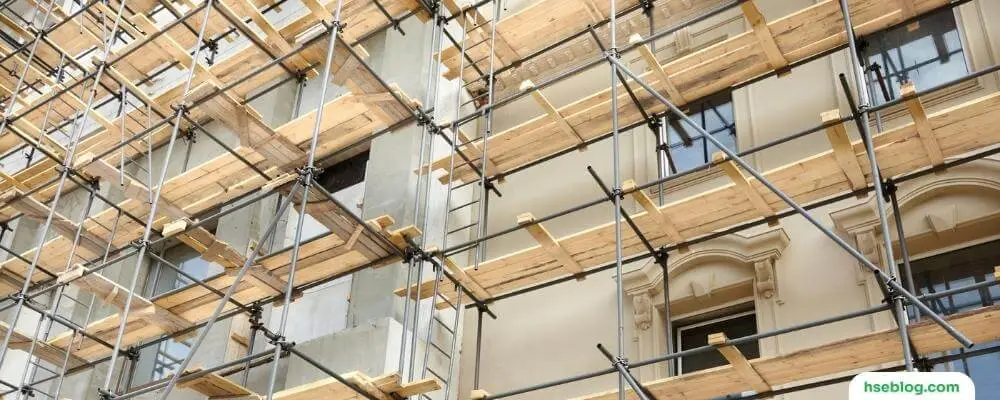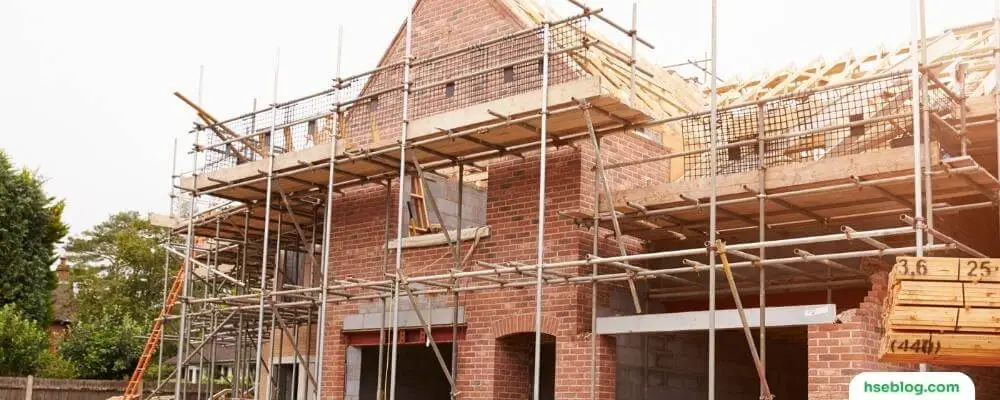Scaffolding is essential in the construction industry, providing workers with safe and stable platforms to work from at height. Various types of scaffolding are available, each designed for specific job requirements. However, choosing the right type of scaffolding can be daunting, especially for those new to the industry. Using the wrong type of scaffolding can result in accidents and injuries, not to mention delays in project completion.
In this blog, we’ll discuss the factors to consider when choosing the right type of scaffolding for the job, including the height of the project, the weight of the load, the accessibility of the site, and the duration of the project. By the end of this blog, you’ll be equipped with the knowledge needed to choose the most appropriate scaffolding system for your project, ensuring a safe and efficient working environment for your team.
Importance Of Choosing The Right Type Of Scaffolding
Choosing the right type of scaffolding for a construction or maintenance job is crucial for several reasons. These include safety, efficiency, cost-effectiveness, and compliance with regulations. Let’s delve into these factors in more detail:
- Safety: The most important reason for selecting the appropriate scaffolding is to ensure the safety of the workers and anyone near the construction site. The wrong type of scaffolding may lead to accidents, injuries, or even fatalities. Proper scaffolding selection ensures stability, adequate load capacity, and appropriate access for workers to perform their tasks securely.
- Efficiency: The right type of scaffolding can improve work efficiency by providing workers with easy access to the work area and the necessary tools and materials. This, in turn, can lead to faster project completion times and better overall productivity. Conversely, using the wrong scaffolding system can hinder progress and create bottlenecks in the workflow.
- Cost-effectiveness: By selecting the correct scaffolding system for the job, you can minimize labor costs and project delays. The right scaffolding will also help you avoid the expense of unnecessary repairs or replacements due to damage or wear and tear. In addition, efficient scaffolding can reduce the time and resources needed for setup and dismantling, saving time and money.
- Compliance with regulations: Construction and maintenance projects must comply with various safety and building regulations, which often include specific requirements for scaffolding. By choosing the appropriate type of scaffolding, you can ensure compliance with these regulations and avoid fines or other legal consequences.
- Adaptability: Different jobs may require different types of scaffolding, such as suspended, rolling, or fixed scaffolding. The right scaffolding system should be adaptable to the project’s specific needs, including the work environment, height, and job complexity.
- Environmental impact: The right type of scaffolding can help minimize the environmental footprint of a construction project. For example, modular or reusable scaffolding components can reduce waste and promote sustainability.
In conclusion, selecting the appropriate type of scaffolding for a job is essential for ensuring safety, efficiency, and cost-effectiveness. It is crucial to assess the specific needs of the project, consult with experts, and follow regulations to make the best choice. This will ultimately lead to better project outcomes and a safer work environment.

Dangers Of Not Choosing the Right Type of Scaffolding
Choosing the right type of scaffolding is crucial for the safety and efficiency of any construction, maintenance, or repair project. Using incorrect or inadequate scaffolding can lead to various dangers and risks for workers and the project itself. Some of the key dangers of not choosing the right type of scaffolding include the following:
- Increased risk of accidents: Incorrect scaffolding may lack the necessary safety features or provide adequate support for workers and materials, leading to falls, slips, and other accidents. This can result in serious injuries or fatalities.
- Structural instability: Using the wrong type of scaffolding can lead to structural instability, putting both workers and the project at risk. An unstable scaffold can collapse, causing injuries and damage to property.
- Inefficient workflow: Without the right type of scaffolding, workers may be unable to access the required areas or work comfortably, leading to decreased productivity and inefficiency.
- Legal and financial repercussions: Failure to use the appropriate scaffolding may result in non-compliance with safety regulations, leading to fines, penalties, or even the suspension of work. This can have significant financial and reputational consequences for the involved parties.
- Increased project costs: Using the wrong scaffolding can lead to delays in project completion due to accidents, inefficiencies, or regulatory issues. These delays can result in increased project costs and missed deadlines.
- Worker dissatisfaction and high turnover: Workers exposed to unsafe working conditions, such as inadequate scaffolding, may be less likely to stay on the job. High turnover can lead to project delays and increased recruitment and training costs.
To avoid these dangers, choosing the right type of scaffolding for each project is essential. This involves assessing factors such as load capacity, height requirements, and the nature of the work. Additionally, it is crucial to ensure that scaffolding is installed, inspected, and maintained by qualified professionals to minimize risks and maximize safety.

Choosing the Right Type of Scaffolding for the Job
Choosing the right type of scaffolding for a job is critical to ensuring safety and efficiency on a construction site. Here are some factors to consider when selecting the appropriate type of scaffolding for your project:
1. Height of the Project
When choosing the right type of scaffolding, consider the project’s height. Different scaffolding systems are designed to support work at varying heights, so it’s crucial to select one that can safely accommodate the project’s highest point. Some common types of scaffolding include:
- Single-pole scaffolding: Suitable for relatively low heights, such as single-story buildings and small-scale repair work.
- Double-pole scaffolding: Ideal for medium-height projects, like multi-story buildings and large-scale renovations.
- Suspended scaffolding: Perfect for high-rise buildings or structures with limited ground access, where workers must be suspended from the top of the building.
2. Weight of the Load
The weight of the load is another essential factor to consider when selecting a scaffolding system. If the project requires heavy machinery or materials to be transported to and from the scaffolding, you must choose a system that can handle the weight. It’s essential to ensure that the scaffolding can handle not just the weight of the load but also the weight of the workers, tools, and materials required for the job.
3. Accessibility of the Site
The accessibility of the site is another crucial factor to consider when choosing the right type of scaffolding. If the site is challenging to access, you’ll need a scaffolding system that can be erected quickly and easily without extensive dismantling. In such cases, mobile scaffolding or suspended scaffolding may be the best option, as they can be easily moved to different locations and adjusted to meet the changing needs of the job.
4. Duration of the Project
The project’s duration is another critical factor to consider when choosing the right type of scaffolding. If the project is expected to take several months or even years, you’ll need a scaffolding system that can withstand prolonged exposure to the elements. Steel or aluminum scaffolding may be the best option in such cases, as they are sturdy, durable, and can withstand harsh weather conditions.
5. Project Requirements
The project’s specific requirements are also essential factors to consider when choosing the right type of scaffolding. Some projects require specialized scaffolding to meet unique needs, such as:
- Working on uneven or sloping surfaces: In this case, you may need scaffolding with adjustable legs or base plates to ensure stability and safety.
- Working in confined spaces: For projects involving confined spaces, such as tunnels or shafts, specialized scaffolding, such as suspended or mobile scaffolding, may be required.
- Working on curved or irregular surfaces: Projects that involve working on curved or irregular surfaces may require specialized scaffolding, such as tube and fitting scaffolding or system scaffolding that can be customized to fit the structure’s shape.
- Working in hazardous environments: Projects that involve working in hazardous environments, such as chemical plants or nuclear power plants, may require specialized scaffolding designed to withstand exposure to hazardous materials or radiation.
By considering the project’s specific requirements, you can choose the right type of scaffolding that can meet the project’s unique needs while ensuring the work’s safety and efficiency.

6. Nature of the Work
The nature of the work is an important factor to consider when selecting a scaffolding system. If the job involves painting, plastering, or other finishing work, you’ll need scaffolding that provides easy access to all project areas. In such cases, mobile scaffolding or rolling towers may be the best option, as they can be easily moved and adjusted to reach different areas.
7. Ground Conditions
The ground conditions of the site are another critical factor to consider when choosing a scaffolding system. If the ground is uneven or unstable, you’ll need a system that can provide a level and stable base. In such cases, adjustable scaffolding or scaffolding with adjustable feet may be the best option, as they can be leveled on uneven ground.
8. Building Regulations
Building regulations and codes must be considered when selecting a scaffolding system. Different types of scaffolding may be required depending on the size and complexity of the project, as well as the local building codes and regulations. It’s essential to consult a qualified scaffolding professional to ensure the chosen system complies with all relevant regulations.
9. Cost
The cost of the scaffolding system is another crucial factor to consider when selecting the right type of scaffolding. Different systems have different costs, and choosing one that meets the job requirements without exceeding the budget is essential. It’s important to consider not just the initial cost but also the cost of maintenance, repair, and dismantling.
Conclusion
Choosing the right type of scaffolding for the job is essential to ensure the safety of workers and the timely completion of the project. Factors such as the height of the project, weight of the load, accessibility of the site, duration of the project, nature of the work, ground conditions, building regulations, and cost should be considered when selecting the appropriate scaffolding system.
Choosing the wrong scaffolding system can lead to accidents, injuries, delays, and additional costs. It’s crucial to consult with a qualified scaffolding professional to ensure that the chosen system complies with all relevant regulations and safety standards.
By following these guidelines, you can choose the most appropriate scaffolding system for your project, ensuring a safe and efficient working environment for your team and completing the project on time and within budget.

